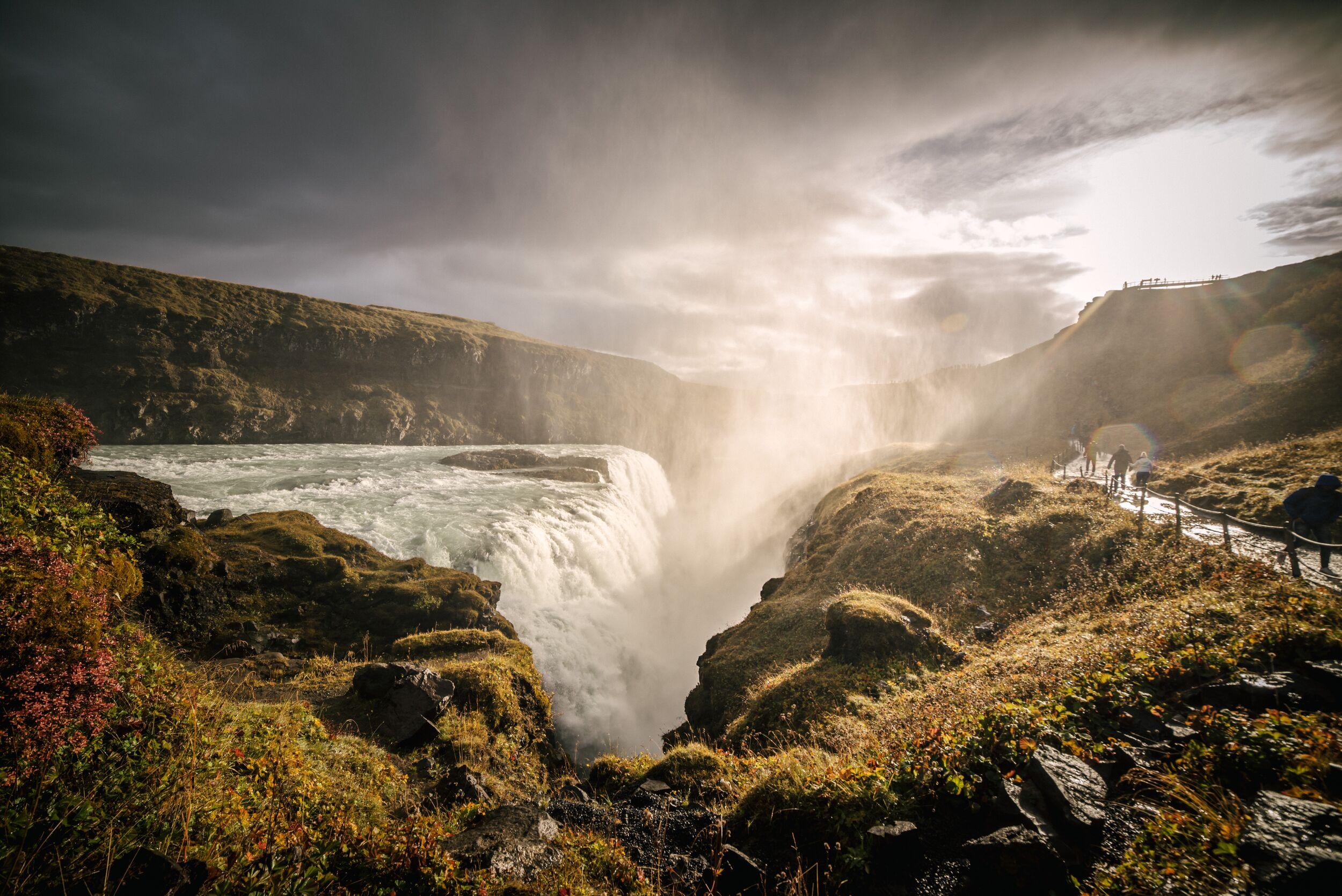Iceland's Must-See Waterfalls
Table of Contents
In the realm of fire and ice, Iceland, the adventurous hearts encounter a symphony of cascading waterfalls. An island where glaciers birth roaring rivers that tumble over ancient cliffs, it's home to thousands of waterfalls, each echoing its unique melody of water and stone.
Each waterfall in Iceland tells its own tale, resonating with a unique rhythm that beats in unison with the heart of the land. From the Golden Circle to the furthest reaches of the Ring Road, and even deep into the untamed interior, these cascades draw wanderers into Iceland's embrace. This is an invitation to step into the world of the majestic, the mystical, and the untamed. This is your passport to the 15 must-see waterfalls of Iceland…
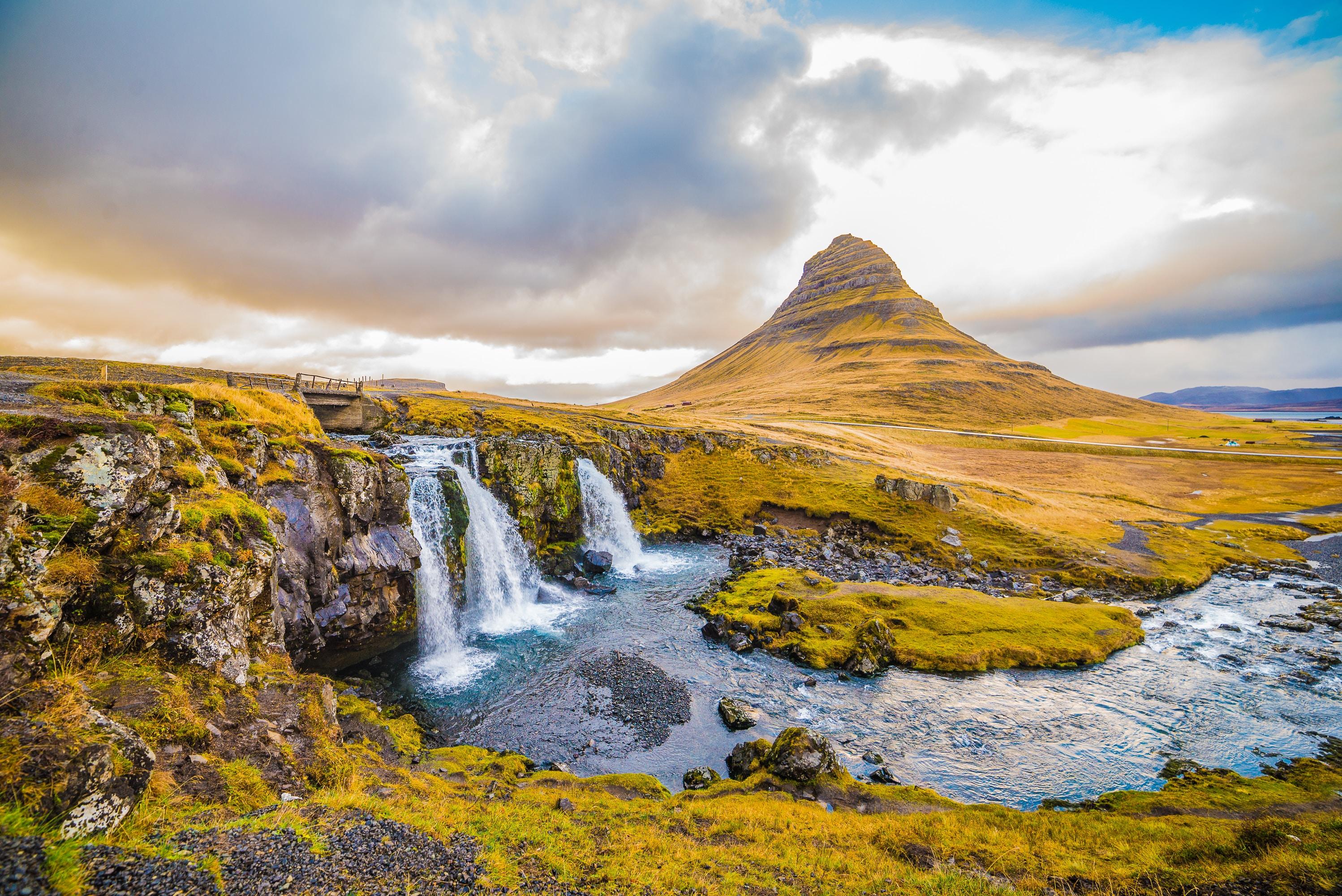
Kirkjufellsfoss on the Snaefellsnes peninsula
The first waterfall on our list is the spectacular Kirkjufellsfoss, which is situated on the Snæfellsnes Peninsula in the west of Iceland. This stunning waterfall is a highlight of the scenic peninsula and is located near the small town of Grundarfjörður. The waterfall gets its name from the nearby Kirkjufell mountain, which translates to "Church Mountain" due to its unique, church steeple-like shape.
Kirkjufellsfoss is not the tallest or the widest waterfall in Iceland, but what it lacks in size, it more than makes up for in beauty. Its water cascades gently over a series of rock steps before flowing into a tranquil pool, making it a serene spectacle against the rugged Icelandic landscape. The waterfall comprises three distinct cascades, with the uppermost section flowing in a charming double cascade.
But what makes Kirkjufellsfoss truly standout is its picture-perfect backdrop. The aforementioned Kirkjufell mountain towers majestically in the background, creating a mesmerizing scene that has made the falls one of the most photographed spots in Iceland.
Whether you're viewing the falls in the summer, when the surrounding landscape is a lush green, or in the winter, when Northern Lights often dance in the sky above, Kirkjufellsfoss is a must-visit site for any Iceland itinerary. It offers stunning photographic opportunities and an unforgettable experience of Iceland's awe-inspiring natural beauty.
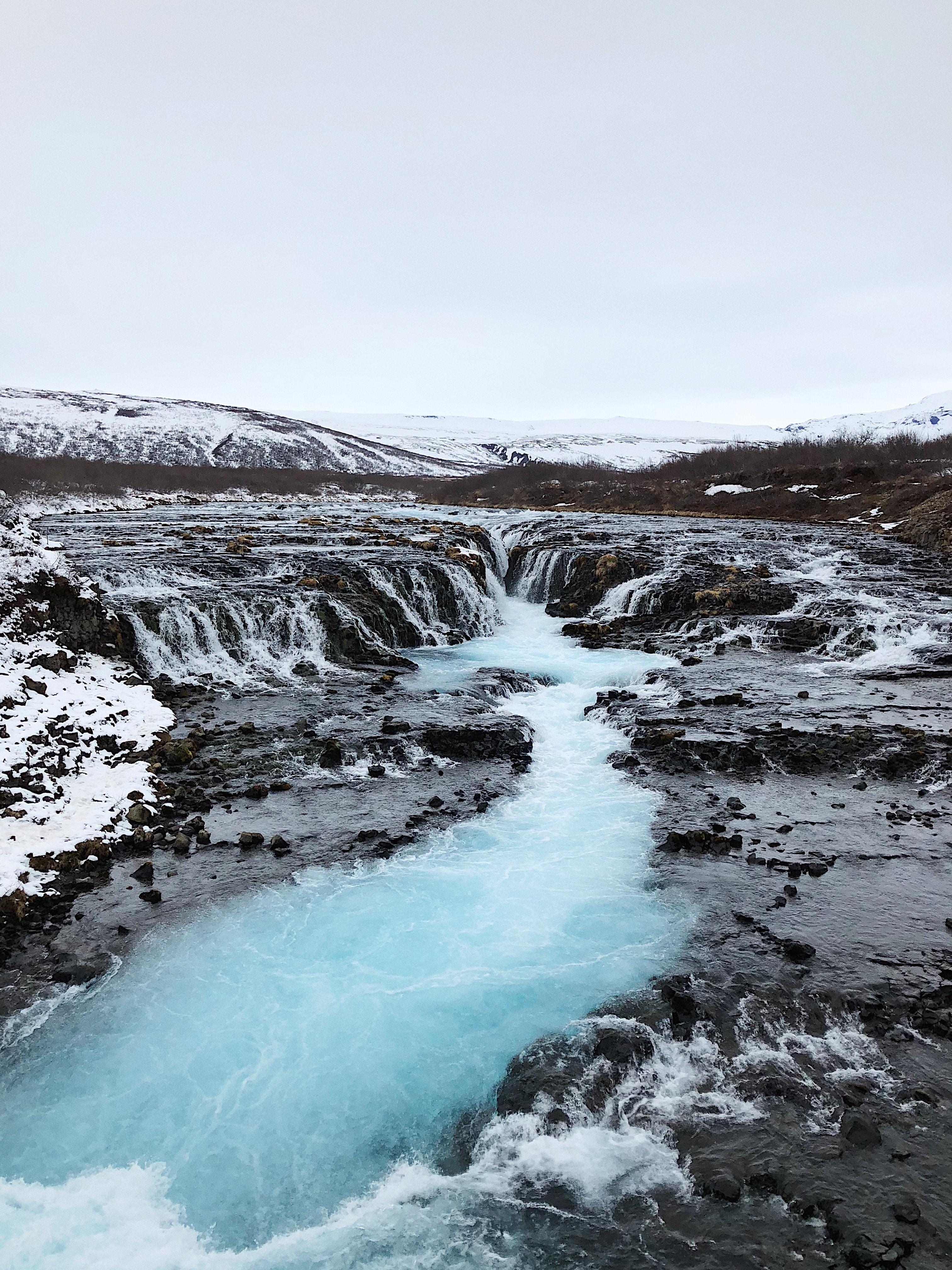
Brúarfoss on the Golden Circle
Hidden in the heart of the Golden Circle, one of the most popular tourist routes in Iceland, lies the gem known as Brúarfoss. Its name translates to "Bridge Waterfall," and this enchanting waterfall is a must-see for any nature enthusiast.
While not as large or grand as some of the other waterfalls on this list, Brúarfoss is renowned for its stunningly vivid, almost surreal, blue color. Fed by the Brúará river, the water plunges down a narrow chute into a deep crevice, resulting in a beautiful cascade of bright turquoise water. The contrast between the waterfall's intense blue hue and the surrounding lush green vegetation makes it a photographer's dream.
Reaching Brúarfoss requires a bit of a trek, as it's not visible from the road, but the walk is definitely worthwhile. The path takes you through a beautiful summerhouse area and a tranquil birch forest. The waterfall itself is surprisingly powerful for its size, with the rush of water creating a stunning spectacle.
Whether you're a professional photographer or simply someone who appreciates the serene beauty of nature, Brúarfoss offers a captivating sight. Its unique color and somewhat hidden location add a sense of magic and allure that is hard to find elsewhere.
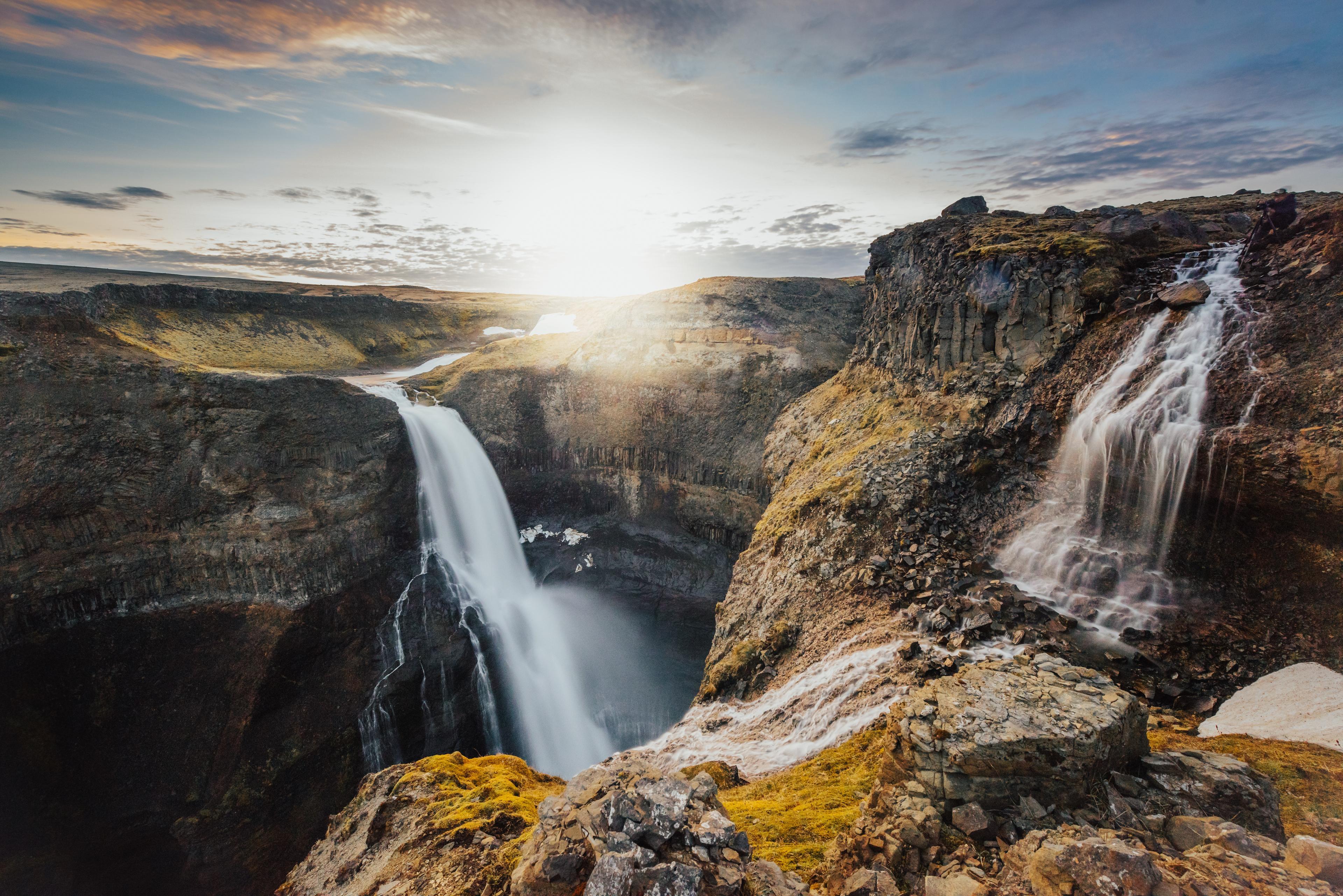
Háifoss at the edge of the Highlands
Nestled deep within the Þjórsárdalur valley in the southern highlands of Iceland, Háifoss, which translates to "High Falls," is Iceland's fourth highest waterfall, plunging from a height of 122 meters (400 feet). It's a somewhat hidden gem, offering a less crowded experience compared to some of Iceland's more famous waterfalls.
To get there, you will traverse the country's beautiful and rugged interior, a journey that requires a 4x4 vehicle due to the rough gravel roads. The somewhat difficult accessibility adds to the secluded charm of Háifoss.
Once there, you'll be greeted by a breathtaking sight: the waterfall's waters plunge dramatically into a narrow gorge, producing a cloud of mist that often captures a rainbow in the sunlight. Adjacent to Háifoss, you'll find its smaller counterpart, Granni, meaning "neighbor," which adds to the stunning panorama. Both waterfalls are fed by the river Fossá, a tributary of Þjórsá, Iceland's longest river.
Surrounded by dark basalt cliffs and the green carpet of the Icelandic moss, Háifoss offers a truly majestic and somewhat otherworldly scenery. The viewing platform provides a safe place to take in the vistas and capture memorable photographs.
Despite its remote location, Háifoss' awe-inspiring beauty makes the journey to see it more than worthwhile. It's a definite must-visit for any nature enthusiast looking for a more off-the-beaten-path adventure in Iceland.
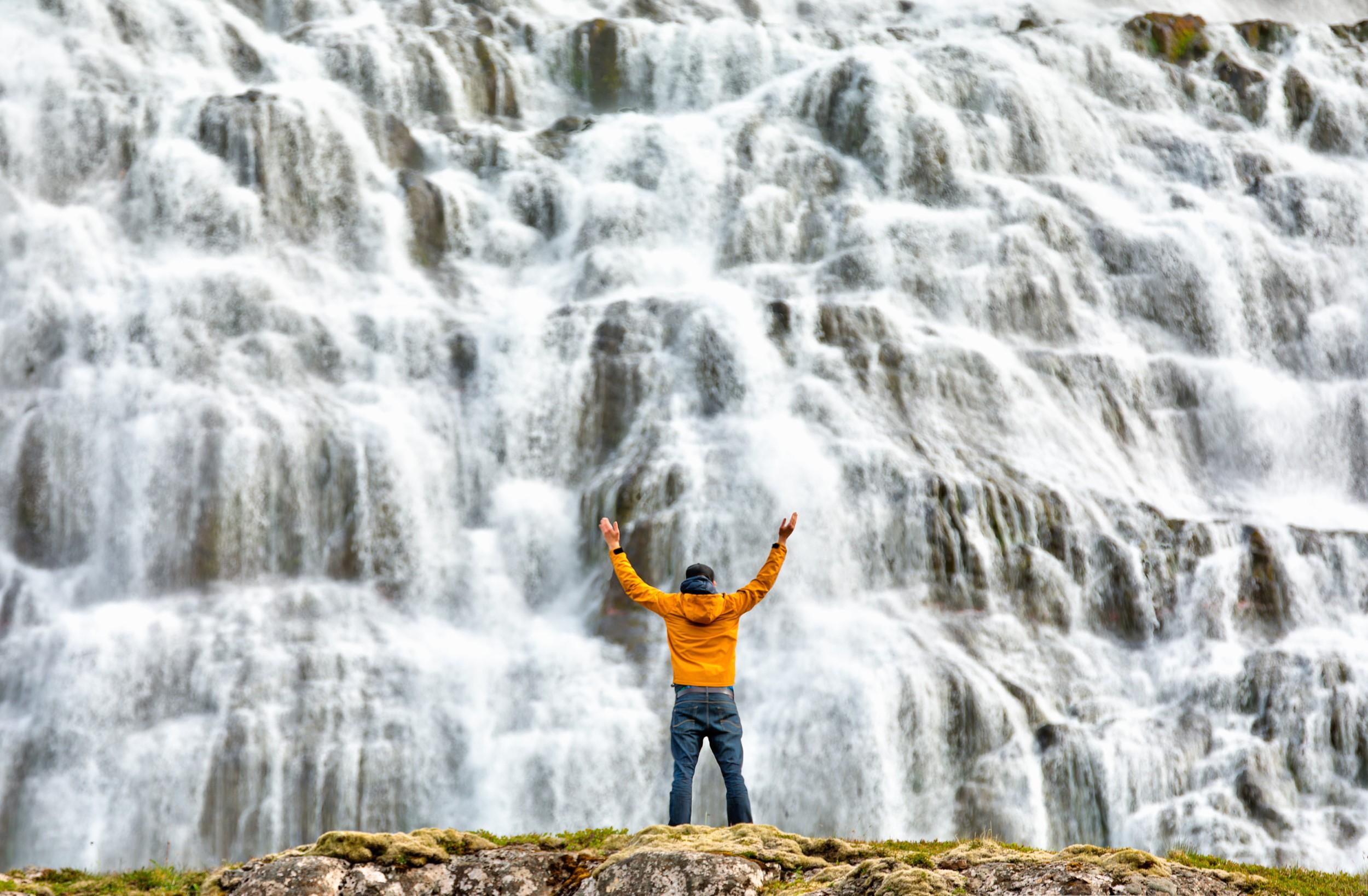
Dynjandi in the Westfjords
Also known as Fjallfoss, Dynjandi is a must-see destination for any waterfall enthusiast exploring the Westfjords of Iceland. This waterfall is genuinely spectacular, and its uniqueness lies in its immense size and the stunning cascading effect it creates, which sets it apart from others in the country.
Dynjandi, which translates to "Thunderous" or "Resounding", certainly lives up to its name. It is the largest waterfall in the Westfjords, both in terms of volume and total height, standing at an impressive 100 meters (328 feet). It's not a single fall but rather a series of seven waterfalls, each with its own name. The main and largest tier, Dynjandi itself, is about 60 meters high and spans 30-40 meters across the top, widening to 60 meters at the bottom, giving it a distinctive and beautiful veil or fan shape.
Nestled between lush green cliffs and emptying into the idyllic fjord below, Dynjandi offers a breathtaking view that is both humbling and awe-inspiring. To reach the waterfall, there's a well-maintained hiking path that leads you up the hill, offering several vantage points for capturing the perfect photograph. The hike, though moderately steep, is definitely worth the effort, not only for the main waterfall but also to see the six smaller waterfalls beneath it.
Located in a remote part of the country, the journey to Dynjandi is a beautiful adventure in itself, taking you along winding fjord roads with spectacular landscapes at every turn. The magnificence of Dynjandi, coupled with the tranquility of its surroundings, offers an unforgettable Icelandic nature experience.
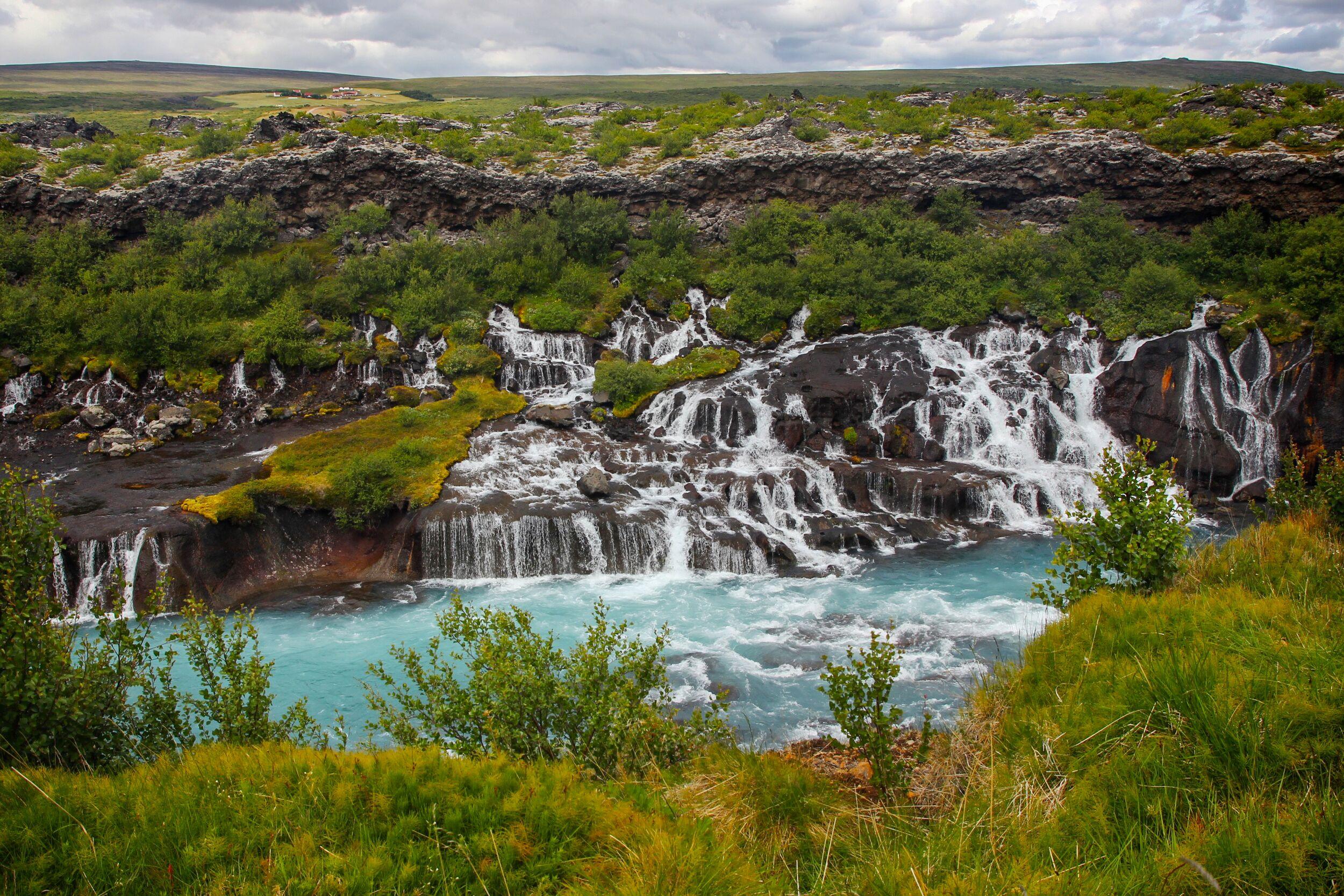
Hraunfossar in the Borgarfjördur area
Tucked away in the west of Iceland, Hraunfossar is one of the country's most unusual and beautiful waterfalls. Unlike the majority of Iceland's waterfalls, which thunder over cliffs or mountainsides, Hraunfossar's waters seem to magically spring forth from the porous lava field (hraun in Icelandic) itself, making it an intriguing geological marvel.
Hraunfossar, which translates to "Lava Falls," is a series of countless rivulets and cascades spanning approximately 900 meters along the edge of the Hallmundarhraun lava field, trickling, streaming, and pouring into the Hvítá river below. The water originates from Langjökull, Iceland's second-largest glacier, seeping through the permeable lava rock over a distance of several kilometers, a journey that can take decades.
The waterfall's charm is further heightened by its stunning contrasting colors, especially during autumn. The milky turquoise water, the dark lava, and the vibrant red and yellow colors of the birch shrubs and moss create a fascinating and colorful tableau. A footbridge offers an unobstructed view of the falls and leads to the neighboring Barnafoss waterfall.
Whether it's the delicate tracery of the water seeping through the rocks, the vibrant color contrasts, or the enchanting setting, Hraunfossar offers an entirely different but no less spectacular waterfall experience compared to Iceland's more thunderous cascades. Its unique formation and serene beauty make it a destination well worth exploring when journeying through west Iceland.
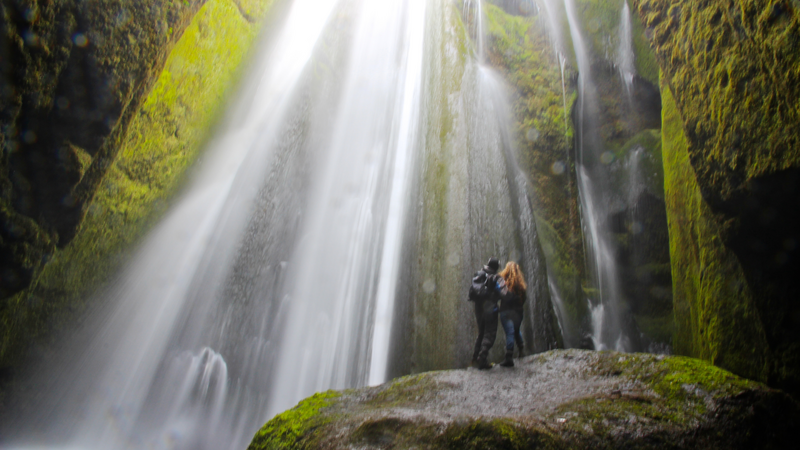
Gljúfrabúi on the South Coast
Hidden from plain view and tucked away behind a large cliff, Gljúfrabúi or "Dweller in the Gorge," is a sublime waterfall in South Iceland, located close to its more famous counterpart, Seljalandsfoss. A small adventure awaits those wishing to fully experience Gljúfrabúi, adding an element of thrill to its discovery.
Gljúfrabúi's water originates from the Eyjafjallajökull glacier and descends approximately 40 meters, partially obscured by the massive cliff in front of it. The waterfall cascades into a small pool, and the surrounding green moss and ferns create a truly enchanting atmosphere. What makes it unique is the giant rock that almost entirely conceals it, creating an impression of a secretive sanctuary, a hidden world awaiting discovery.
To get up close and personal with Gljúfrabúi, visitors must traverse a small stream leading into the narrow canyon where the waterfall is nestled. A stepping-stone path through the stream allows you to walk right up to the waterfall, albeit at the cost of getting a little wet from the waterfall's spray. Once inside the cavern, the sight of the water thundering down in front of you, the walls covered in lush green moss, and the light streaming in from above, all contribute to an ethereal and unforgettable experience.
Gljúfrabúi may be less renowned than some of Iceland's other waterfalls, but the sense of adventure in reaching it and the breathtaking beauty that awaits in the hidden grotto make it an exceptional stop on any tour of South Iceland. It showcases the country's knack for blending awe-inspiring landscapes with a touch of mystery and adventure.
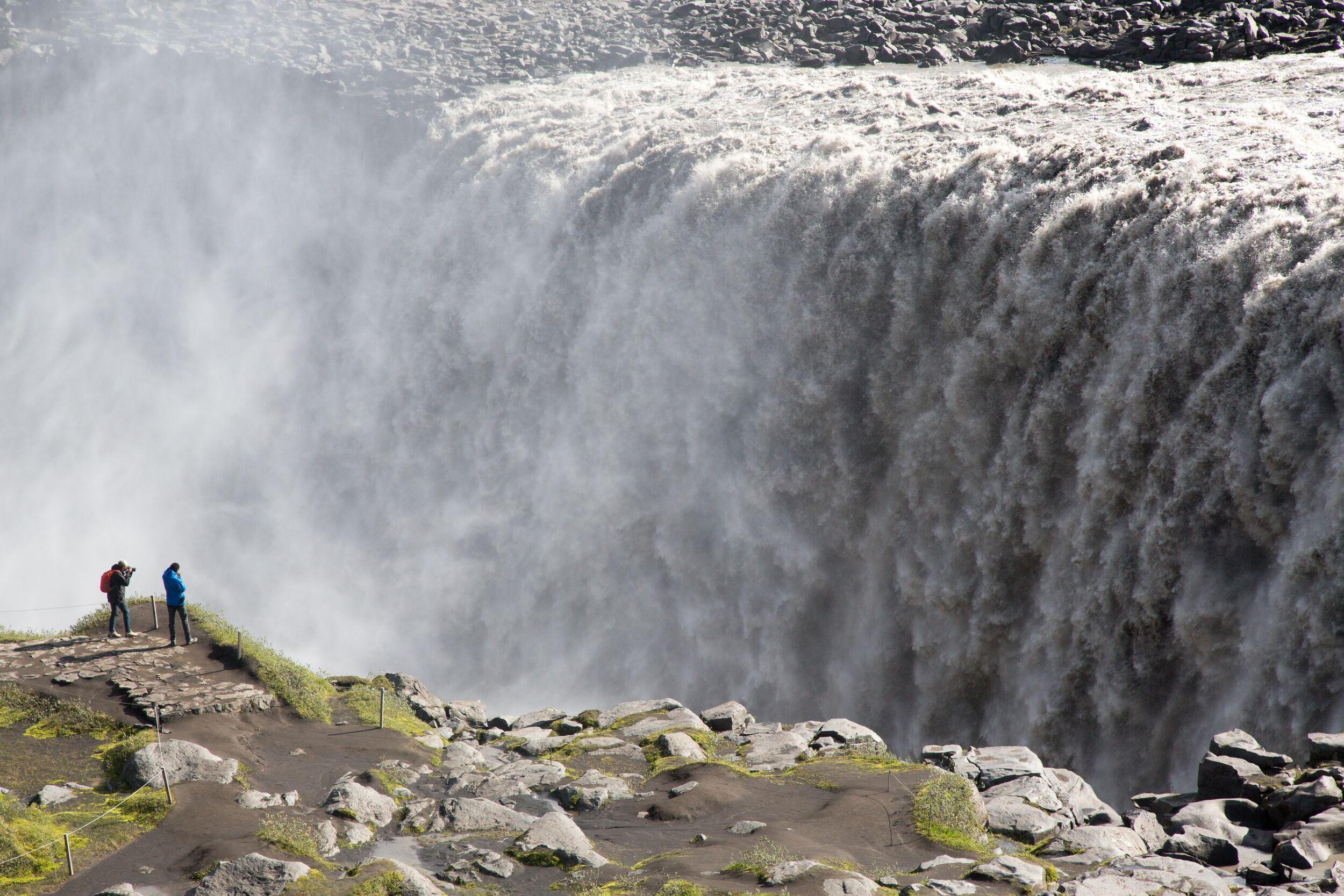
Dettifoss in North Iceland
Situated in the Vatnajökull National Park in North Iceland, Dettifoss is renowned for its raw, unbridled power, holding the title as Europe's most powerful waterfall. The thunderous roar of the water and the pervasive mist it generates add to the waterfall's awe-inspiring appeal.
The waterfall is an impressive 100 meters wide and has a drop of 45 meters into the rugged Jökulsárgljúfur canyon. Its powerful stream originates from the mighty Vatnajökull glacier, the largest glacier in Europe. The strength of the falls is so enormous that the ground around it vibrates, and the plume of spray can be seen from miles away.
One of the standout features of Dettifoss is the incredible volume of water that cascades over its edge every second—approximately 193 cubic meters. This incredible flow gives the falls a wild and tumultuous nature. The milky white color of the water is a result of sediment-rich glacial runoff, creating a stark contrast with the dark basalt columns that frame the falls.
Visitors can access Dettifoss from both the east and west banks of the Jökulsá á Fjöllum river, although the views and facilities differ on each side. The west side has better developed infrastructure and a closer parking area, but the view from the east is considered by many to be more spectacular, offering a wider panorama of the falls and the canyon.
Despite its remote location, Dettifoss attracts many visitors who are eager to experience its grandeur. Its appearance in various films and music videos has also contributed to its fame. However, the real-life experience of seeing and hearing the might of Dettifoss up close is something that no media can fully capture—it's a truly unforgettable display of nature's power.

Glymur in Hvalfjördur
Once known as the tallest waterfall in Iceland before being surpassed by Morsárfoss, Glymur retains a place of honor as one of the country's most striking waterfalls, standing tall with a height of around 198 meters. It's nestled in the beautiful Hvalfjörður fjord in West Iceland, approximately an hour's drive from Reykjavík, making it a popular choice for a day trip.
Reaching Glymur involves an enjoyable and moderately challenging hike through a lush canyon, with a trail that features cave passages, river crossings, and panoramic viewpoints. The hike to Glymur itself can be as rewarding as the waterfall, making the entire experience quite remarkable.
The waterfall's name, which translates to "rumble" or "echo" in Icelandic, is an apt descriptor of the loud, echoing roar the waterfall creates as it plunges into the narrow, mossy canyon below. The waters of the Botnsá river tumble over the edge of Glymur, creating a misty veil that often catches the sunlight, forming vibrant rainbows on sunny days.
An additional point of interest is a small cave through which the river flows before it drops over the cliff, creating an impressive spectacle during high water levels. This adds an extra level of intrigue and grandeur to the Glymur experience.
Given its accessibility, beauty, and the adventure it offers, Glymur has earned its status as one of Iceland's must-see waterfalls. It's an experience that effortlessly blends the tranquility of nature with the thrill of exploration.
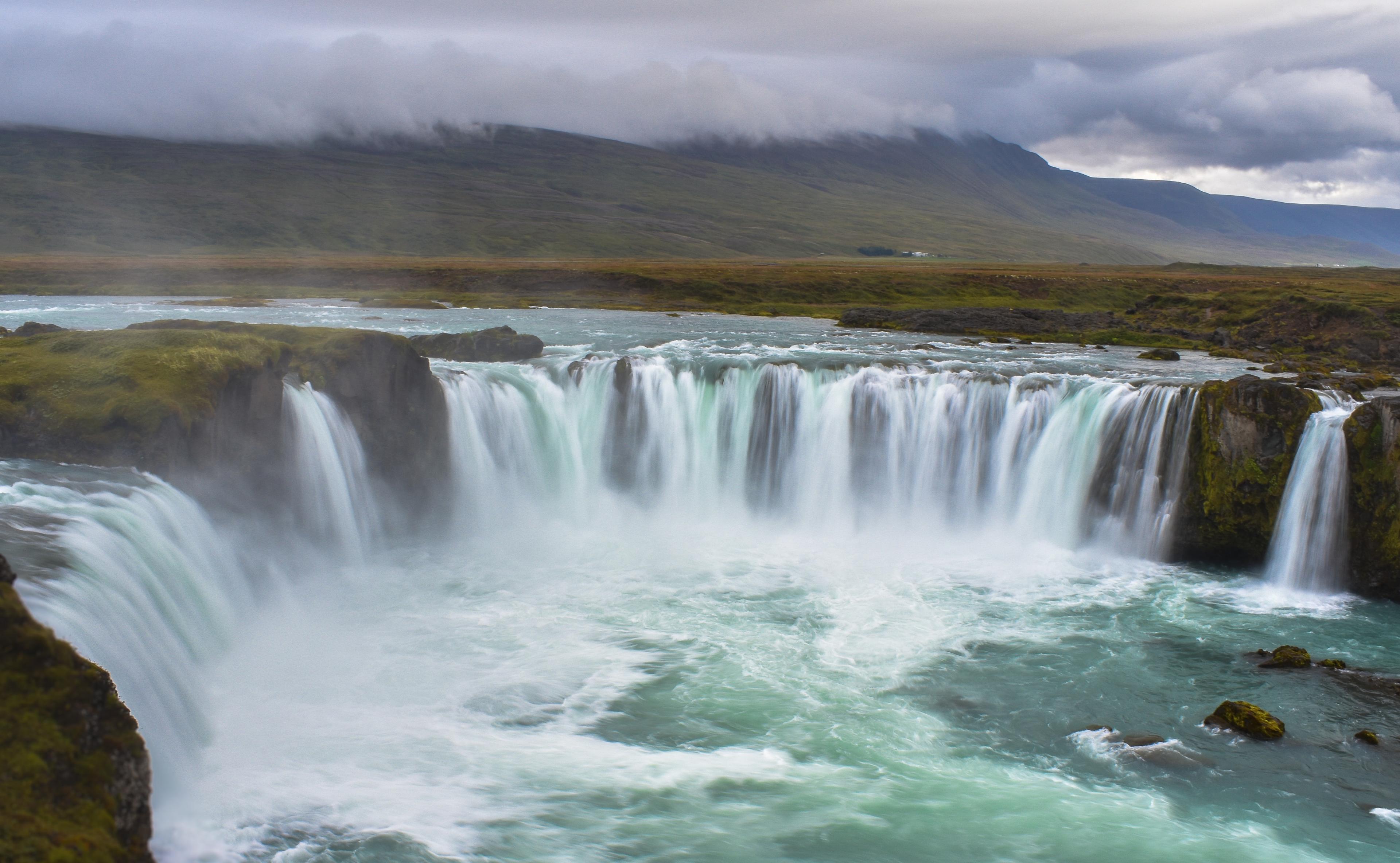
Gódafoss in North Iceland
Known as the "Waterfall of the Gods," Gódafoss is one of the most dramatic and historically significant waterfalls in Iceland. Situated in the northeastern region of the country, along the popular Diamond Circle route, Gódafoss is a must-visit for history enthusiasts and nature lovers alike.
Gódafoss stretches 30 meters wide, with water cascading down 12 meters into a rugged, horseshoe-shaped canyon. The waterfall gets its power from the river Skjálfandafljót, which originates in the Icelandic highlands. The sight of the voluminous waters splitting into several elegant arcs over the rocky ledge is breathtaking, to say the least.
The waterfall's name and significance date back to the year 1000 AD when Iceland converted to Christianity. According to historical texts, Thorgeir Thorkelsson, the local chieftain and law speaker, made the pivotal decision to convert Iceland to Christianity and, in a symbolic act, cast his statues of the old Norse gods into the waterfall. This event gave the waterfall its name, Gódafoss, which means "waterfall of the gods."
Gódafoss is easily accessible and visible from the Ring Road, making it a popular stop for those touring the region. There are viewpoints on both sides of the river, allowing visitors to admire the waterfall from different perspectives. Despite its ease of access, Gódafoss retains an air of wild and unspoiled beauty, with its clear blue waters and surrounding lava fields creating a spectacular sight. It truly embodies the raw power and rich history that Iceland is renowned for.
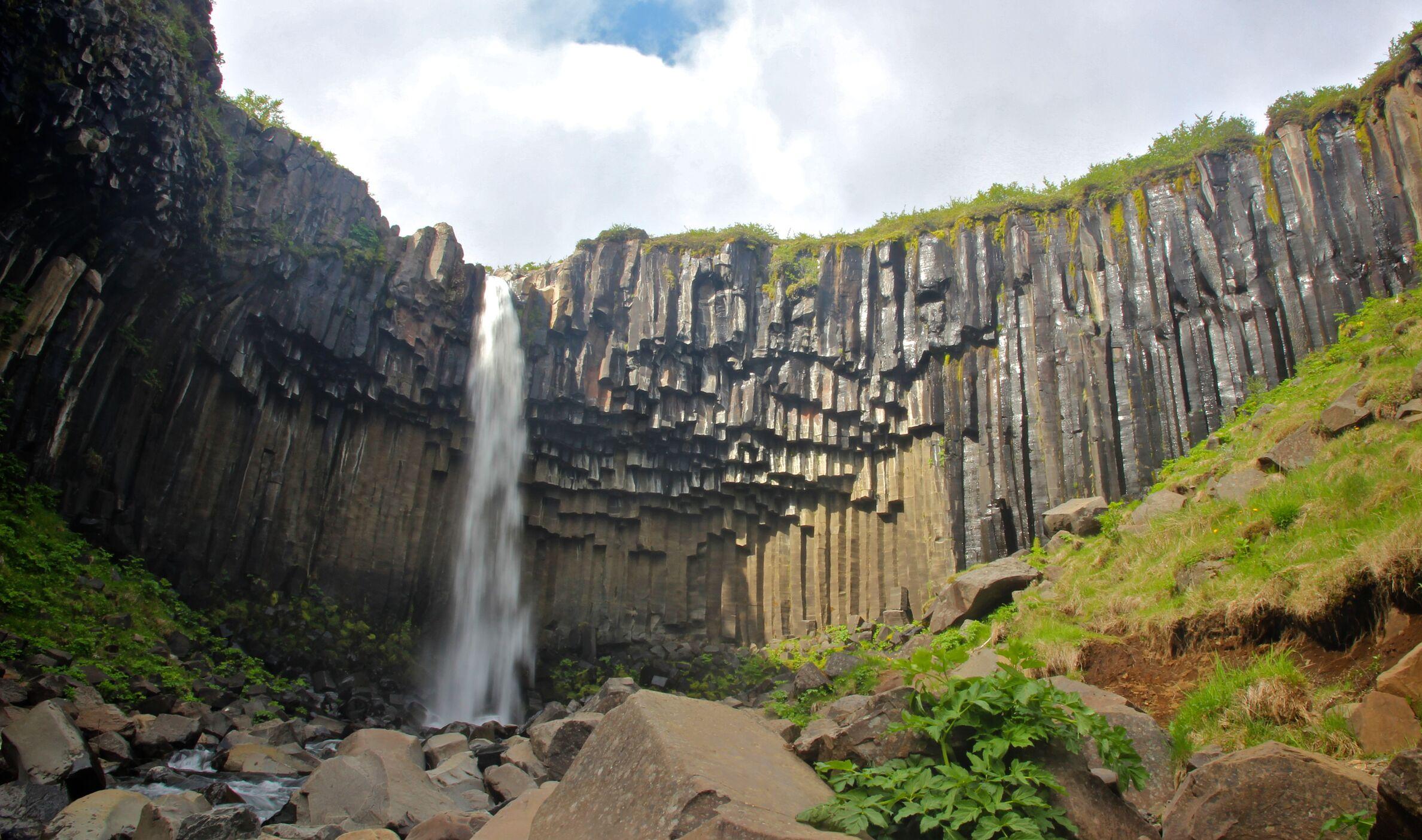
Svartifoss in Skaftafell
Nestled within the verdant landscape of the Skaftafell Nature Reserve, part of Vatnajökull National Park, is Svartifoss, or the 'Black Waterfall'. This mesmerizing waterfall is as artistically stunning as it is geologically unique, earning it a place among Iceland's most distinctive waterfalls.
Svartifoss stands at about 20 meters tall and its water originates from the melted ice of the Svínafellsjökull glacier. While it might not boast the height or power of some of Iceland's other waterfalls, it certainly makes up for it with its visual appeal. What truly sets Svartifoss apart is the backdrop of dark, hexagonal basalt columns that resemble an organ's pipes, from which the waterfall descends. This sight gives the waterfall its name, 'Svartifoss' translating to 'Black Waterfall' in English.
These striking basalt formations are a result of cooling lava flows that cracked into a hexagonal pattern, a fascinating display of the power of volcanic activity in shaping Iceland's dramatic landscapes. The setting of Svartifoss is enhanced by the lush greenery that surrounds the falls, offering a stark contrast against the dark basalt columns.
Reaching Svartifoss requires a moderate hike from the Skaftafell Visitor Centre, a journey that takes you through beautiful birch woodlands and past other smaller waterfalls. The sight of Svartifoss amidst its unique surroundings makes this hike well worth the effort.
Interestingly, the distinctive basalt columns of Svartifoss have inspired several Icelandic architects. One notable example is Hallgrímskirkja, the iconic church in Reykjavik, which mirrors the shapes of these columns in its design. As such, Svartifoss not only leaves a lasting impression on its visitors but also continues to influence Icelandic culture and architecture.
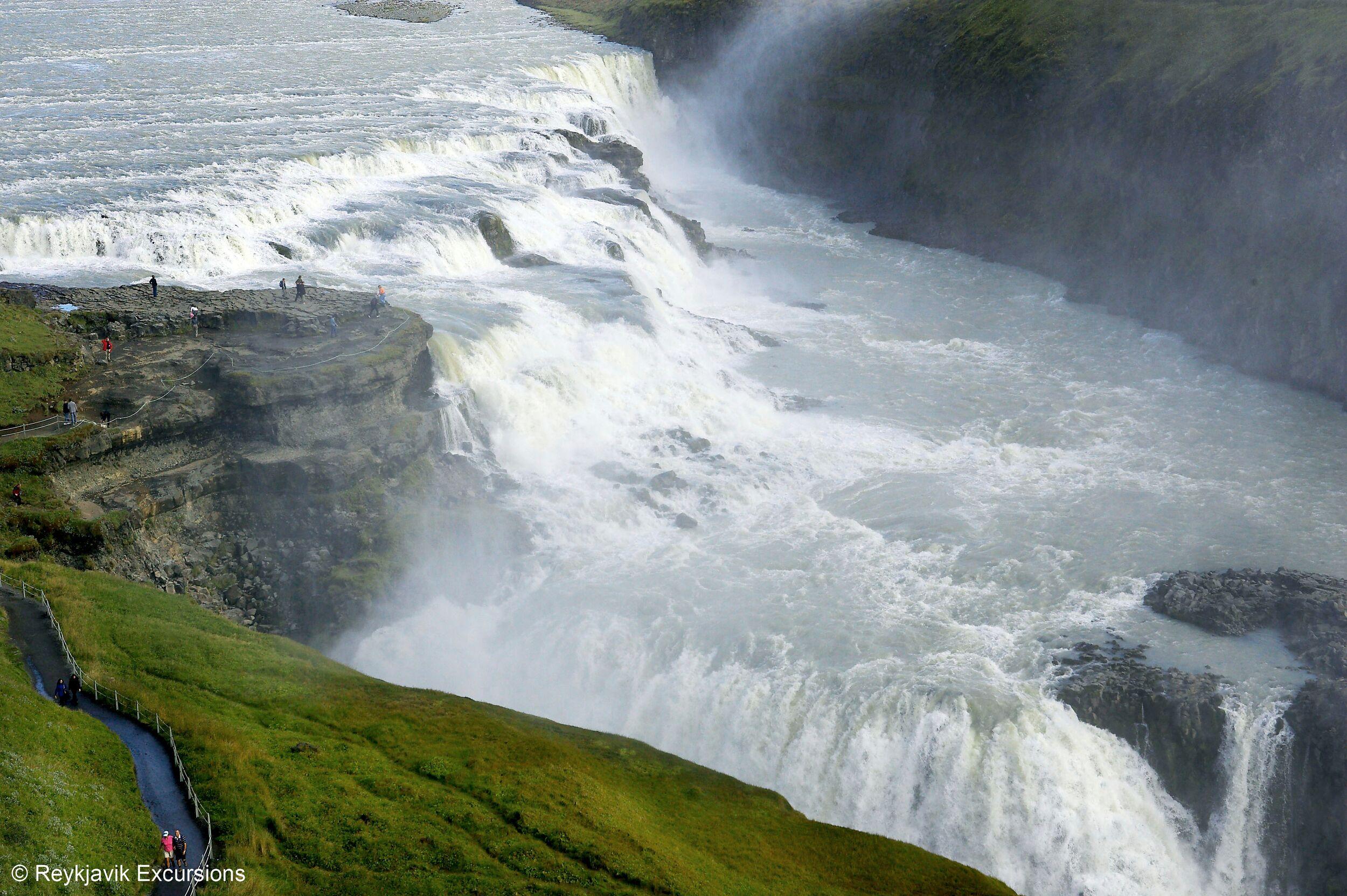
Gullfoss, the crown jewel of the Golden Circle
One of the most iconic and visited waterfalls in Iceland, Gullfoss is a spectacular sight to behold. Gullfoss, translating to 'Golden Waterfall', is a part of the popular Golden Circle tourist route, which also includes Thingvellir National Park and the geysers of Geysir Geothermal Area.
The beauty of Gullfoss is not just in its sheer power, but in its unique structure. The waterfall is comprised of two distinct cascades set at right angles to each other, creating a dramatic 'staircase' effect. The first tier is relatively modest, dropping 'only' 11 meters, but it's the second tier where Gullfoss truly shines: a massive, roaring plunge of 21 meters into a rugged canyon.
The Hvítá River feeds Gullfoss, and the volume of water cascading over the falls is truly a spectacle, especially during the summer months when the flow is at its peak due to glacial melt. On sunny days, the mist from the waterfall catches the light, creating beautiful rainbows that add to the enchantment of the place.
Gullfoss is not only a natural wonder but also holds historical significance. In the early 20th century, foreign investors wanted to harness the waterfall for electricity production, which could have changed its appearance drastically. Sigríður Tómasdóttir, the daughter of the then-owner of Gullfoss, fought a legal battle to preserve the waterfall in its natural state. She is often hailed as Iceland's first environmentalist, and a memorial stone in her honor can be found at the falls.
Accessible viewing platforms offer stunning views of Gullfoss, providing multiple angles to appreciate the power and beauty of this waterfall. Winter visits can be particularly breathtaking when the falls partially freeze, but icy conditions require careful footing. No matter the season, Gullfoss promises an unforgettable experience, reflecting the raw power of Iceland's natural landscapes.
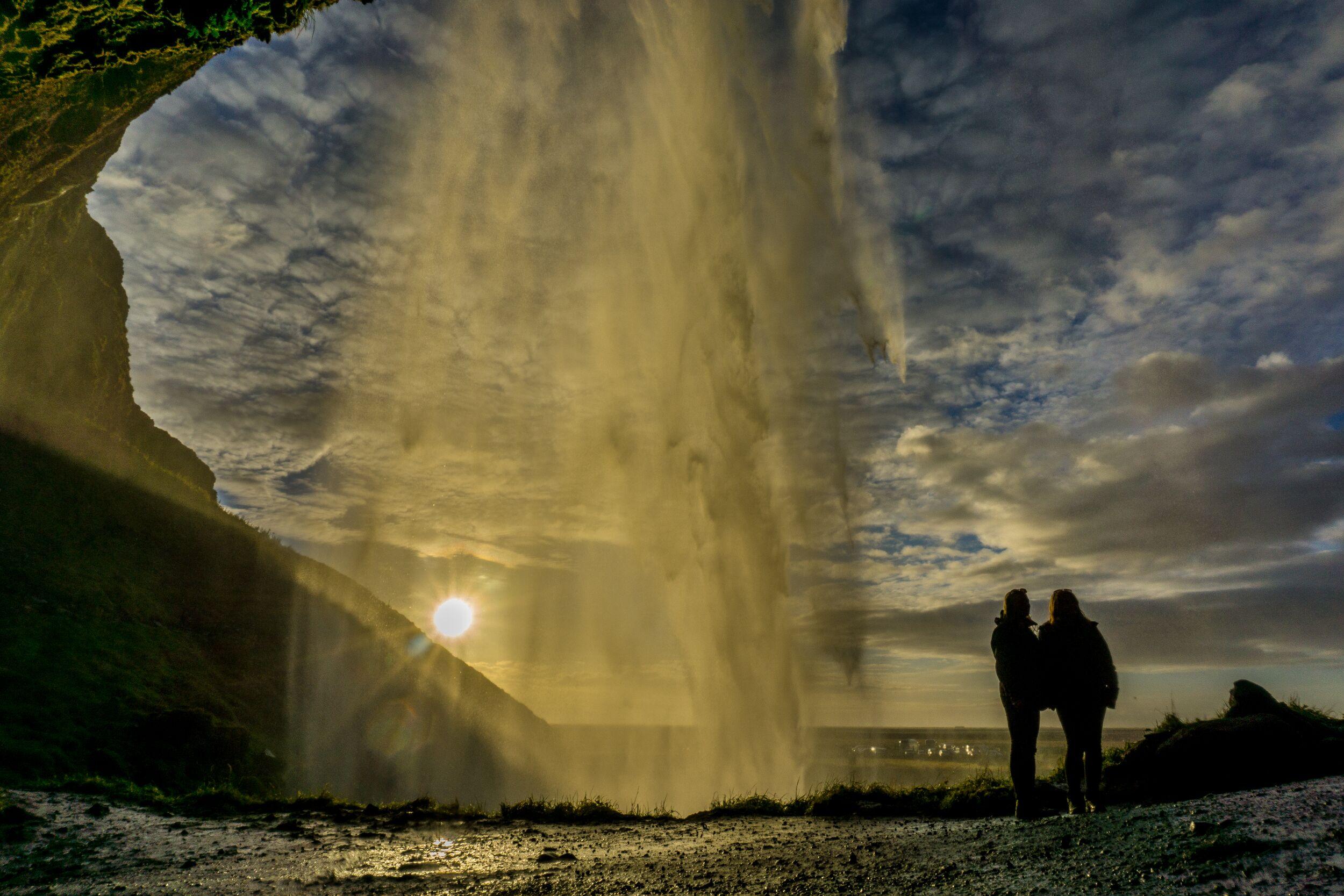
Seljalandsfoss, the star of the South Coast
Noted for its breathtaking beauty and unique positioning, Seljalandsfoss is one of Iceland's most renowned waterfalls and a stop that is not to be missed on any trip around the island.
Located along the southern coast, it is just off Route 1, also known as the Ring Road, making it easily accessible for travelers. The Seljalandsá river, originating from the infamous Eyjafjallajökull glacier, cascades over the cliff edge, falling a dramatic 60 meters into a tranquil pool below.
One of the key features setting Seljalandsfoss apart from other waterfalls is the ability for visitors to walk behind the falls into a small cave. The walking path provides a unique 360-degree view of the waterfall. As you stand behind the waterfall, you can watch the water crash down in front of you while enjoying a different perspective of the surrounding landscapes through the curtain of falling water. This exceptional experience of being able to see the world from behind a waterfall makes Seljalandsfoss a unique gem among the myriad of Icelandic falls. Be warned, though, the path can be slippery, and you'll probably get a little wet from the spray!
At night, in the right conditions, Seljalandsfoss is illuminated, creating an ethereal spectacle. Furthermore, during the summer, when the midnight sun is out, you can enjoy this stunning waterfall bathed in a surreal, golden light late into the night. In winter, if you're lucky, you might see the Northern Lights dancing above it.
Seljalandsfoss is a testament to the raw, unspoiled beauty that characterizes Iceland, promising a unique and stunning experience for those fortunate enough to visit it.
In the land of Ice and Fire, water reigns supreme, cascading from rugged cliffs, creating a mesmerizing spectacle of sound and sight. Indeed, the bounty of waterfalls in Iceland is truly breathtaking. This list has introduced you to the most famous, the ones that have been graced by countless lenses, inspired numerous travelers, and firmly etched their names into the folklore of this magical island nation.
But remember, these famed cascades are just the beginning. Iceland's wilderness teems with hidden treasures, its nooks and crannies holding countless cascades waiting to be discovered. Each one carries its unique charm, its own story woven into the ancient fabric of Iceland.
So, as you plan your journey, consider this list your guide, but let your adventurous spirit be the compass. Seek out the untrodden paths, listen for the distant roar of an undiscovered fall, and embrace the thrill of the unknown. Because in Iceland, every waterfall has its tale to tell, and the next one you stumble upon might just be the most unforgettable of all.
Waterfalls in Iceland - All you Need to Know
It's difficult to definitively say which waterfall in Iceland is the best as it's largely subjective and depends on individual preferences. However, Gullfoss is often regarded as one of the most spectacular due to its size, power, and scenic location.
Kirkjufellsfoss, with its distinctive mountain backdrop, is likely the most photographed waterfall in Iceland, often captured with the beautifully symmetrical Kirkjufell Mountain in the background.
The largest waterfall in Iceland, in terms of height, is Morsárfoss. It's located in the Morsárjökull glacier region in southeast Iceland.
Seljalandsfoss is one of the unique waterfalls in Iceland that visitors can walk behind. This feature provides a unique perspective and makes for stunning photographs.
Brúarfoss is often regarded as Iceland's bluest waterfall due to its intensely azure water that contrasts beautifully with the surrounding greenery.
The most famous waterfall in Iceland is arguably Gullfoss, known for its grandeur and its location on the famous Golden Circle route.
Many visitors and locals consider Dynjandi in the Westfjords as the most beautiful waterfall in Iceland, with its unique, cascading "veil"-like structure.
Zac Efron visited the stunning Skógafoss waterfall during his trip to Iceland, as featured in his travel show, "Down to Earth with Zac Efron."
Any waterfall can have a rainbow if the light conditions are ideal for the phenomenon to be created. However, Gullfoss is the most famous one of all: due to its misty spray, often creates beautiful rainbows on sunny days, adding to its charm and appeal.
The golden waterfall in Iceland is Gullfoss, part of the popular Golden Circle tourist route. Its name, meaning "Golden Falls," comes from the golden hue that often shines in its mist.
Yes, most waterfalls in Iceland are free to visit. However, at some popular tourist sites, there may be a small parking or facilities fee.
Recommended tours

Golden Circle & Blue Lagoon
Experience the best of Iceland with this package of two of the island’s most popular tours in one day! The Golden Circle encompasses the must-see sights of Þingvellir National Park, the golden Gullfoss waterfall, and the bubbling geothermal region of Geysir. After touring the landmarks, soak in the milky blue healing water of the Blue Lagoon.
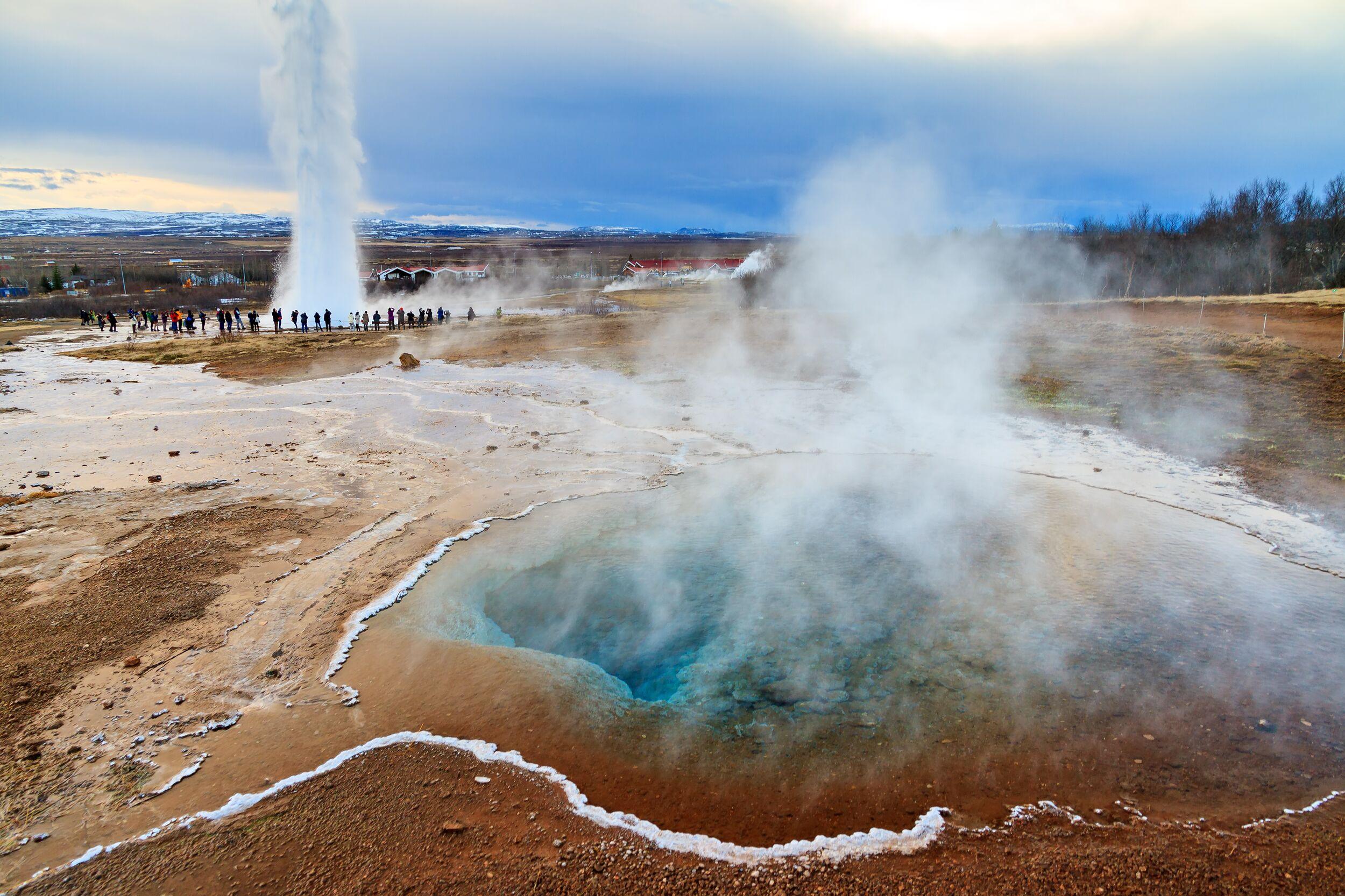
Golden Circle Direct
Want to see the sites of the Golden Circle but have a limited amount of time? Consider this express Golden Circle tour! Experience the landmarks of the classic Golden Circle in South Iceland on this unforgettable day tour. The Golden Circle encompasses the must-see sights of Þingvellir National Park, the golden Gullfoss waterfall, and the bubbling geothermal region of Geysir.
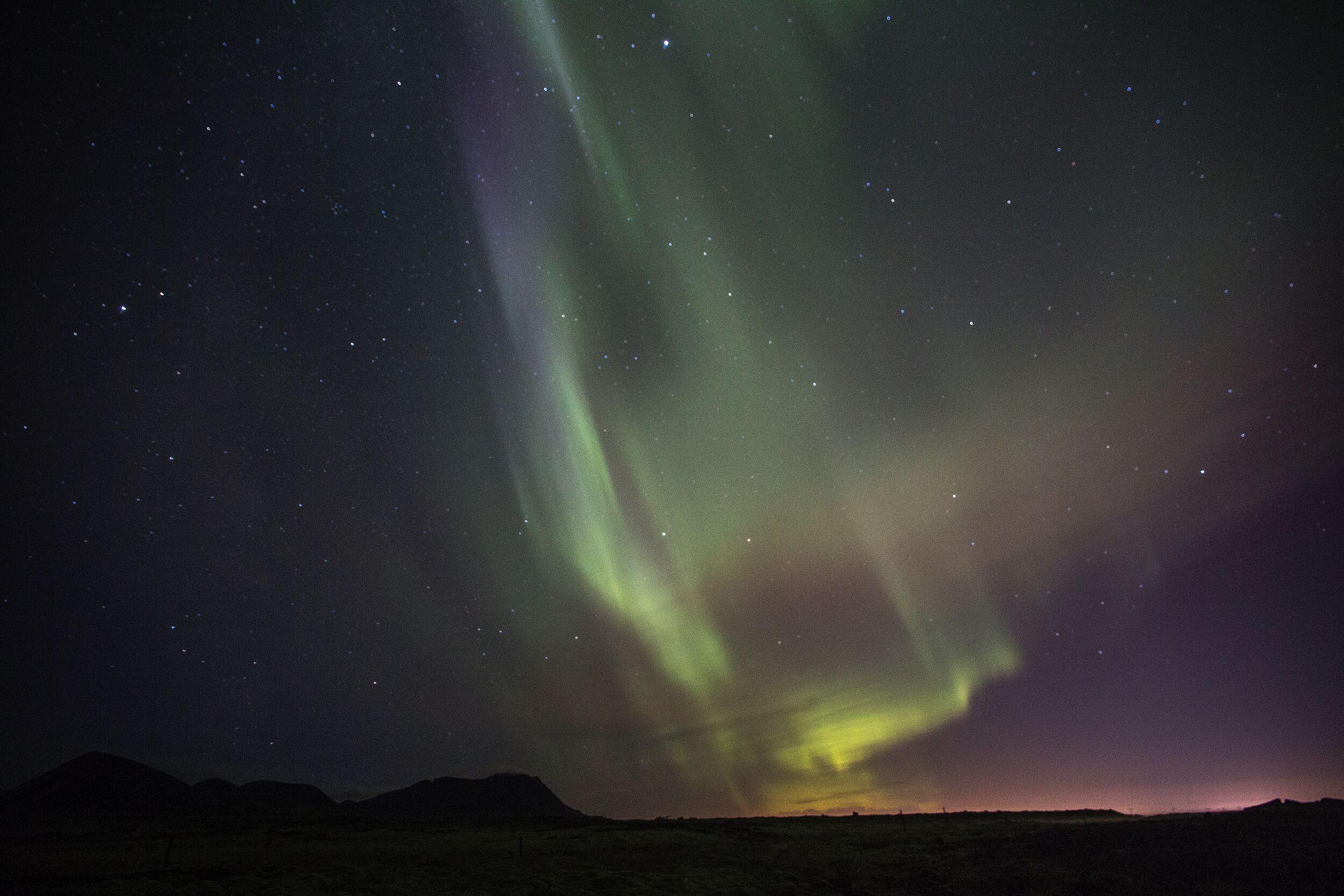
The Golden Circle & Northern Lights - Combo Deal
Want to see the sites of the Golden Circle and hunt for the northern lights but have a limited amount of time? Consider this express Golden Circle/Northern Lights tour! Experience the landmarks of the classic Golden Circle in South Iceland on this unforgettable day tour. The Golden Circle encompasses the must-see sights of Thingvellir National Park, the golden Gullfoss waterfall, and the bubbling geothermal region of Geysir. After your return to Reykjavík, a guide will lead you on a search for the elusive northern lights!
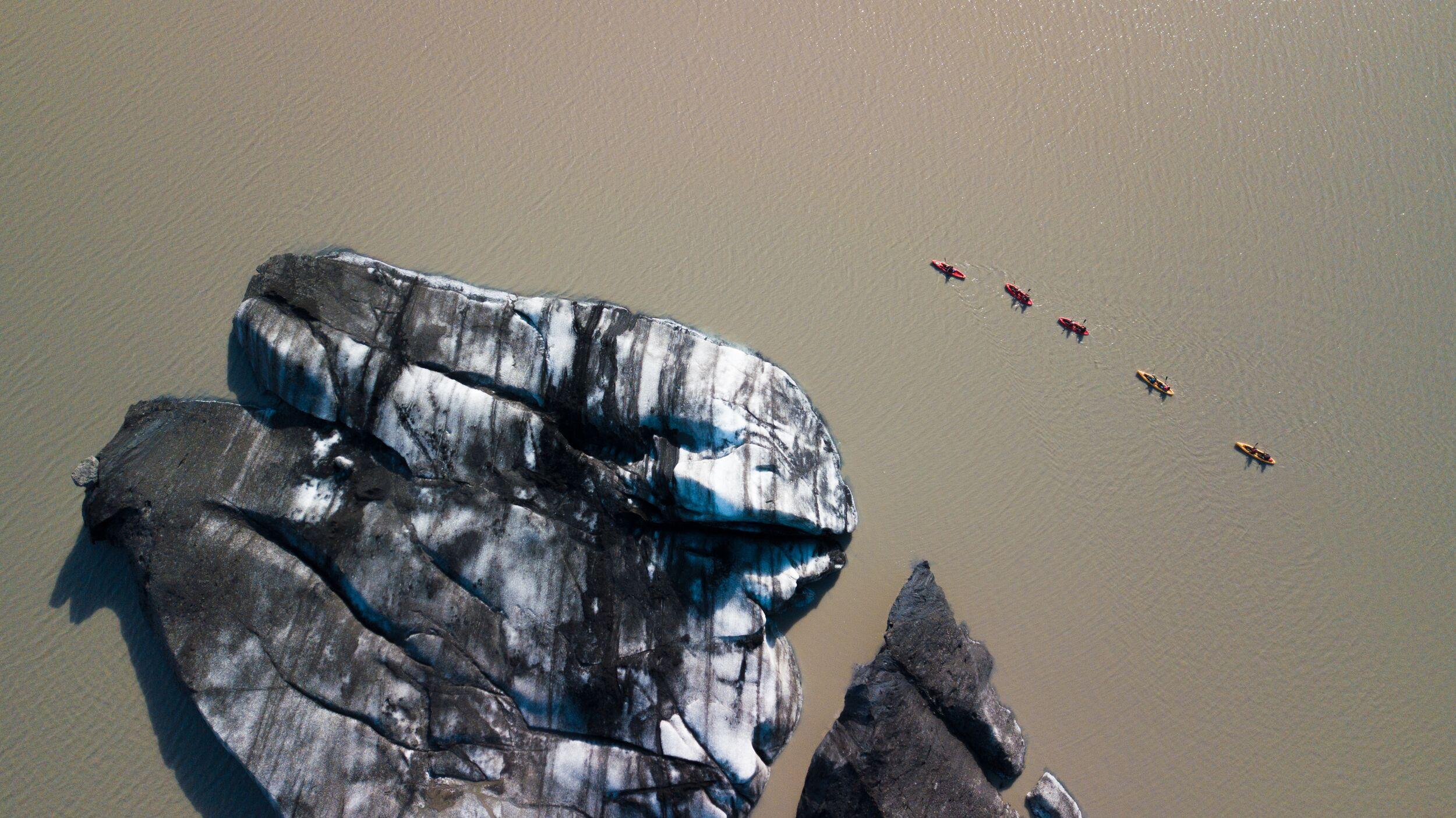
South Coast & Glacier Kayaking
Discover the essence of Iceland's natural beauty on this day tour, featuring two of Iceland's most renowned waterfalls and an exhilarating kayaking experience on a glacier lagoon. Journey through landscapes that blend cascading waters with icy wonders, all in a single, unforgettable day.
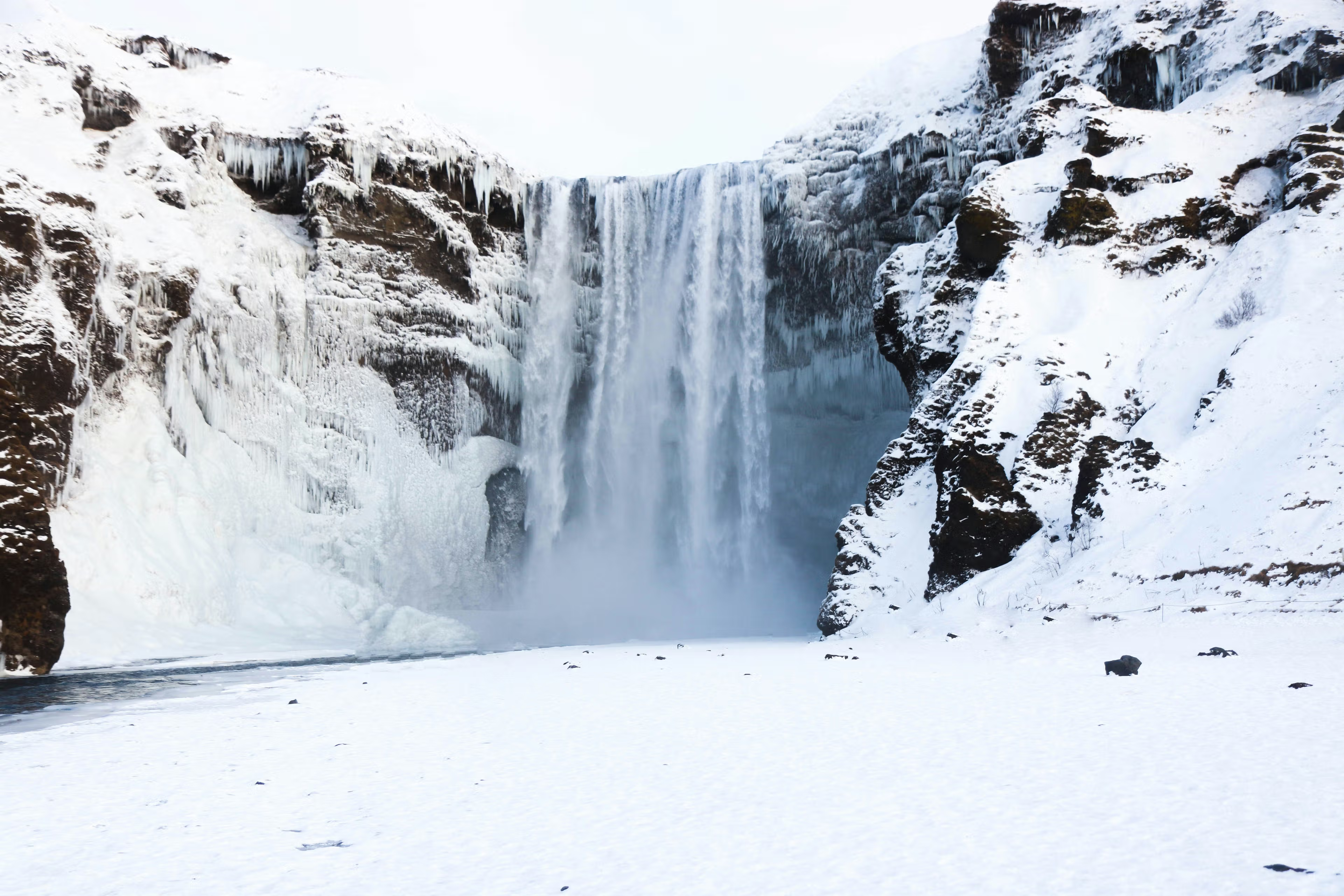
South Coast Wonders
This carbon-neutral Iceland South Coast tour is perfect for nature lovers looking to explore Iceland’s top natural attractions in just one day. Visit the stunning Seljalandsfoss and Skógafoss waterfalls, walk along the famous Reynisfjara black sand beach, see the breathtaking Sólheimajökull glacier, and experience the charm of Vík village—and enjoy incredible landscapes along the way.

Golden Circle and Glacier Super Jeep Tour
Experience the iconic Golden Circle of Iceland in unparalleled style and comfort with our luxury Super Jeep tour. Perfect for families, friends, or solo explorers, this adventure takes you off the traditional paths and into the heart of Iceland’s breathtaking landscapes, including a Super Jeep ride across the majestic Langjökull, Iceland’s second-largest glacier.


